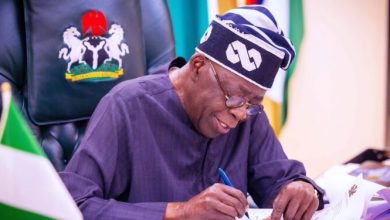FG Paid N135.23bn for Electricity Subsidy in Q2 2023

The Federal Government in Q2 2023, paid a total of ₦135.23bn for electricity subsidy, a 275%q/q increase from ₦36.02 billion paid in Q1 2023. The report was based on information obtained from the Nigerian Electricity Regulatory Commission (NERC). The Commission stated that the subsidy was due to the absence of cost-reflective tariffs across all Distribution Companies, noting that the government’s decision to unify rates which led to a devaluation of the Naira resulted in an increase in cost. In the absence of cost reflective tariffs, the government undertakes to cover the difference between the cost-reflective and the permitted tariff in the form of tariff shortfall funding.
•
• At the end of July, the Nigerian Electricity Regulatory Commission (NERC), noted that eleven electricity distribution companies (DisCos) had filed an application for rate review with the commission. The request for rate review was premised on the need to incorporate changes in macroeconomic parameters and other factors affecting the quality of service, operations and sustainability of the companies. The DisCos noted that the proposed tariff increase is in response to the devaluation of the Naira which has effectively changed costs. Under the MYTO 2022 guidelines, the previously set exchange rate of N441/1 dollar may now be revised to approximately N750/1 dollar. In effect, current realities necessitate an increase in tariffs.
•
• One of the most glaring problems with the power sector is its uncommercial tariff plan. There appears to be no consistent correlation between the cost of producing and supplying electricity and the tariff charged to the customer. To compound the matter, billing and cash collection has been grossly inefficient due to poor metering. The Multi-Year Tariff Order (MYTO) was intended to set electricity tariffs for consumers over a 15-year period, from 2008 to 2023. There were to be minor reviews of the industry’s pricing structure twice a year (announced on 1 December and 1 June) and major reviews every five years. Minor reviews can only consider 4 variables namely: the rate of inflation, gas prices, foreign exchange rates and actual daily generation capacity.
•
• A new tariff structure was introduced in June 2012, the main effect of which was to increase tariffs. This was due to the fact that a number of key assumptions that underlay the 2008 MYTO had not been met and others did not reflect the actual operating environment. Thus, the tariff schedule was not cost-reflective, which is a prohibitive condition to new investors. There have been a number of adjustments to the MYTO II tariff since 2014, when the first adjustment was announced but discos still note that the tariffs are still not cost reflective. The current technical devaluation of the Naira against the U.S dollars should necessitate a review but that may be difficult to achieve as there are already strong price triggers in place which have extensively impoverished the average Nigerian. Until the current costs can be passed on to end users, the government will have to bear the burden of increased subsidy payments




